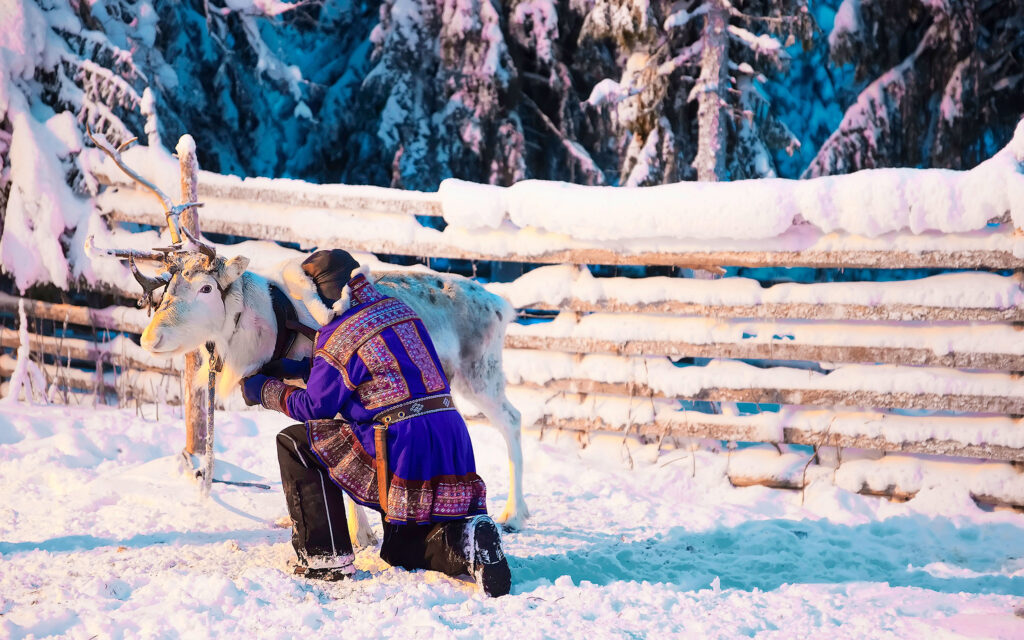Language, along with culture, can be a powerful tool for creating community among a people no matter how spread apart they might be. The Saami Language is spoken by the indigenous people in Nordic countries and is classified as a Finno-Ugric language with its closest linguistic relatives being Finnish and Hungarian. But much like those languages, it is very unique and has little to no influences from other languages or linguistic groups due to a lack of historical adaptation within a larger majority language and culture (like Swedish or Norwegian).
It is spoken in four different countries and yet it unites the speakers into one group. This language is spoken in Northern Finland, Sweden, Norway, and the extreme Northwest of Russia. Saami (also spelled Sami and Sámi in English) is divided into Eastern, Central, and Southern categories, but overall can be divided into ten different dialects such as Lule Saami, North Saami, Pite Saami, South Saami, and Ume Saami in Sweden. However, all dialects of the language are on the UNESCO Endangered List. There are strong revitalization efforts in the areas where the language is spoken. The Saami writing system used to have its own unique alphabet, but was switched from that original writing method over to a modified Swedish orthography in the 1950s.
Saami culture traditionally is a nomadic way of life with income from farming, fishing, and reindeer herding. However, only 10% of the people live a traditional nomadic lifestyle with herding reindeer, but many of them have strongly resisted outside ways of life in an attempt to preserve their language and culture. This is why the language continues to be classified as Uralic (meaning related to Scandinavian languages) as it has not taken any influence from other languages. Saami also are considered to have some of the oldest folk music in Europe.
Currently, there are only just over 500 speakers of the language in Norway and it is the most endangered language, but in recent years the Sami parliament has been given more power by the various Nordic governments. While there are a lot of revitalization efforts by putting out literature and news broadcasts to encourage Saami learners, there are areas, such as in a community in Sweden, where there are less than 50 speakers, all over the age of 60. However, there has been a dictionary published, the South Saami dictionary is available on our website here, so that a new generation has a resource to help learn the language. The communities and number of speakers may be small, but the efforts to grow the language are large. Certain dialects are taught in school: from young children being taught in Saami in order to encourage it as a first language to a bachelor’s degree at Universities.
For more reading:
https://www.arcticpeoples.com/sagstallamin-the-saami-languages

